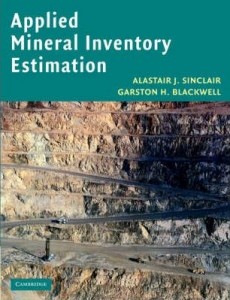Mineral resources estimation doesn’t have to be equal to public ridicule
Canadian Rubicon Minerals (TSE:RMX) (OTCMKTS:RBYCF) was one of the hottest junior mining stories of the past decade, but the company made serious errors while developing its Phoenix gold project in Ontario’s Red Lake camp and quickly fell out of favour.
The main issue to trigger the miner’s recent meltdown was the fact that it slashed its gold resources by an astounding 88% in early January. Rubicon went from claiming the Phoenix project held 3.3 million ounces of the precious metal to disclosing it had a mere 413,000 ounces, or about eight time less than originally estimated.
This dramatic resource downgrade has brought renewed attention to the topic of how best to determine mineral resources. Geologists and investors alike agree that the estimation procedure should incorporate efforts to minimize errors at every level of decision.
Register for “Mineral Resource Estimation” now
How exactly that can be done will be the focus of EduMine’s upcoming Mineral Resource Estimation short course, to be held on April 18 and 19 in Vancouver, Canada.
 The course, run by veteran in the topic Alastair J. Sinclair, will consider the detailed methodology of various resource/reserve estimation techniques that are in common use in the mining industry. Emphasis will be on general procedures, inherent assumptions, and advantages and limitations of each of the principal methods.
The course, run by veteran in the topic Alastair J. Sinclair, will consider the detailed methodology of various resource/reserve estimation techniques that are in common use in the mining industry. Emphasis will be on general procedures, inherent assumptions, and advantages and limitations of each of the principal methods.
The Phoenix project is very complex. Like many gold projects in the Canadian Shield, the mineralization is inconsistent and a great deal of drilling is required to identify all the gold. Professionals that master the basics of the upcoming EduMine course on mineral estimation will be able to understand what exactly went wrong.
For more information and to register, please visit: http://www.edumine.com/courses/short-courses/mineral-resource-estimation/

Comments